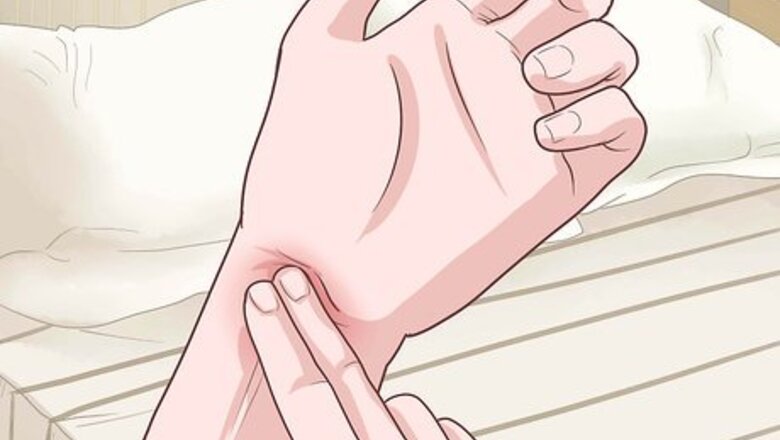
views
X
Trustworthy Source
American Heart Association
Leading nonprofit that funds medical research and public education
Go to source
By measuring your heart rate you can get an idea of how healthy your heart is and monitor how hard you are working during exercise.
Taking Your Pulse
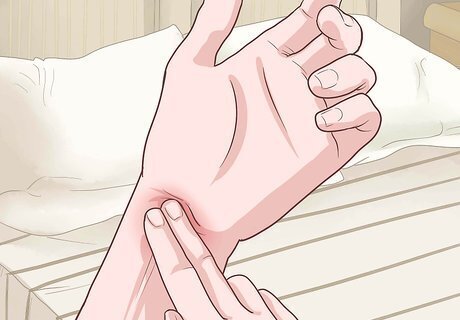
Check your pulse at your radial artery. This is one of the easiest places to measure your heartbeat because you have a large artery right below the skin. Each time your heartbeats, you will feel a pulse as the blood rushes through your artery. Hold out one arm, palm up. Gently press your index finger and middle fingers to the inside of your wrist between the bone and tendon near your radial artery. This will be approximately one inch below your wrist on the same side as your thumb. You should feel soft tissue beneath your fingers, not bone. You may need to move your fingers around or press slightly harder until you feel it. Count the number of beats for 15 seconds and multiply by 4 to get the number of beats per minute. Use a clock to measure the 15 seconds rather than trying to simultaneously count your pulse and the seconds.

Take your pulse underneath your jaw. This is another location where you should be able to easily and quickly find a strong pulse. Put your index and middle finger to the left of your windpipe where your neck connects to the tissues underneath your jaw. You should be able to feel your pulse on either side of your windpipe, but it might be easier to find on the left side. You may need to move your fingers around and press a little harder until you feel it. Use a clock or stopwatch to keep track of 15 seconds, count the pulses you feel, and then multiply by four. You should get about the same result when you measure your pulse at your wrist or your neck.

See a doctor if you detect any abnormalities in your resting heart rate. Your resting heart rate is the number of beats per minute when you are inactive for at least five minutes; however, if you were exercising, it may take longer for your heart rate to slow down. A person’s resting heart rate naturally varies based on how active you are, how fit you are, how warm or cold it is, whether you are standing, sitting, or lying down, your emotional state, your body size and what medications you are on. Consult a doctor if: Your resting heart rate is usually over 100 beats per minute. This is called tachycardia. Your resting heart rate is below 60 beats per minute, if you are not an athlete. This is bradycardia. Other symptoms that may accompany this condition include fainting, dizziness, or being out of breath. If you are an athlete, a low heartbeat may mean you are in good shape. However, it should not be below 40. Your heartbeat is irregular.
Using Your Pulse to Monitor Your Heart Rate
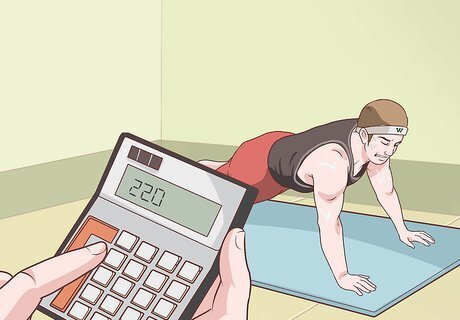
Calculate your maximum heart rate (HRMax). HRMax is the theoretical maximum maximum speed at which your heart can beat. It varies with your age and is used to determine how fast your heart should be beating during exercise of differing levels of difficulty. Subtract your age from 220. For example, a 20 year old should have a maximum heart rate of about 200 beats per minute. Some blood pressure medications may lower your maximum heart rate. If you are on blood pressure medications and using your heartbeat to monitor your exercise, contact your doctor to see how you should determine your maximum heart rate. Consult with a doctor before starting any new exercise routine if you have a health condition, particularly high blood pressure, diabetes, or a heart condition.
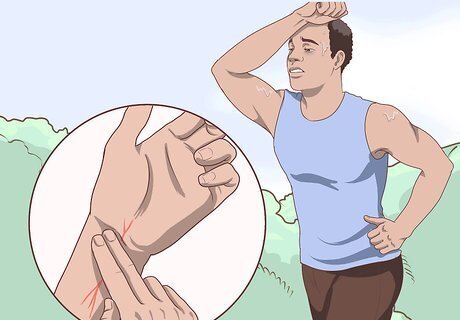
Use your pulse to determine when you are doing moderate exercise. Moderate exercise for 2.5 hours per week should help your heart stay healthy. You are considered to be doing moderate exercise if: Your heart rate is 50-70% of your maximum heart rate. That means that a 20 year old with a maximum heart rate of 200 beats per minute should have a target heart rate of 100–140 beats per minute during moderate exercise. You are dancing, hiking on the flat, biking slower than 10 miles per hour (mph) (16 km/hr), walking at about 3.5 mph (5.6 km/hr), downhill skiing, swimming, gardening, playing doubles in tennis, or playing golf. These activities should produce a heart rate that is 50–70% of your maximum heart rate. If they do not, you may need to push yourself a little harder.
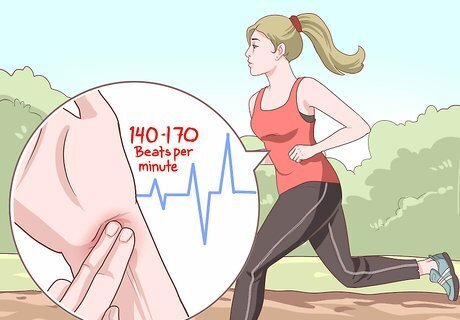
Take your pulse to determine when you are doing vigorous exercise. Doing vigorous exercise for 75 minutes per week or more will improve your heart’s health. You are considered to be doing vigorous exercise when: Your heart rate is 70–85% of your maximum heart rate. For a 20 year old, this would be 140–170 beats per minute during vigorous exercise. You are walking at 4.5 mph (7.2 km/hr) or faster, biking at 10 mph (16km/hr), hiking uphill, walking up stairs, cross-country skiing, playing soccer, running, jumping rope, playing singles in tennis, playing basketball, or doing heavy yard work.

Identify signs of elevated heart rate. If you don't have a monitor or want to stop and take measurements, familiarize yourself with the signs of an elevated heart rate. These include breathlessness or heavy rapid breathing, perspiration, and the inability to carry on a conversation.
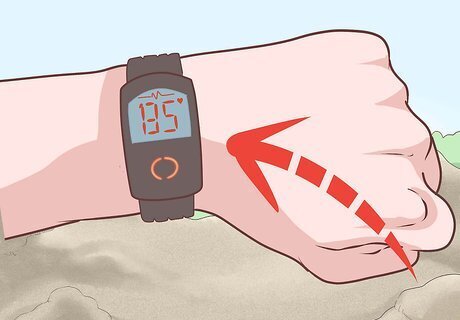
Get serious about monitoring your heart rate with a heart rate monitor. If you do not like calculating your pulse in your head while exercising, you can purchase a heart rate monitor or a fingertip pulse oximeter, which is a little more affordable. Wearable, strap on heart rate monitors are widely available on the internet or at sports stores. You can purchase them and wear them like wrist watches. Most have an electrode that you put on your chest which sends information on your pulse to the monitor on your wrist. Look for one that is easy for you to use while you are exercising. Reading reviews online or talking to experts in sports stores will help you decide what is most practical for your particular sport.


















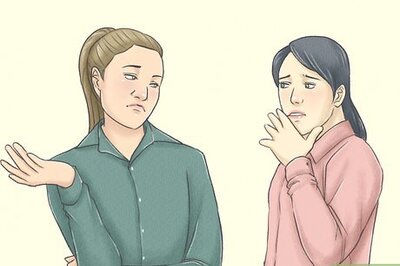

Comments
0 comment